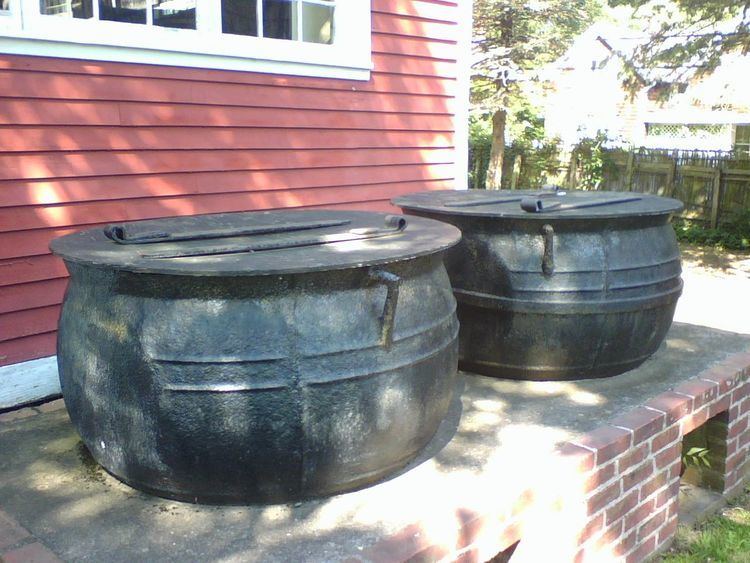 | ||
A try pot is a large pot used to remove and render the oil from blubber obtained from cetaceans, pinnipeds and also to extract oil from penguins. Once a whale had been caught and killed, the process of removing the blubber from the whale (flensing) began. The raw blubber was then placed in try pots in order to extract the oil.
Early on, oil was rendered from blubber in try pots onshore, not on ships at sea.
On whalers try pots would be built into the deck, a part of the ship known as the tryworks. In the 18th- and 19th-century New England whaling industry, the use of try-works (two large try pots in a brick furnace) on whaling ships allowed them to stay at sea longer and boil out their oil. The slices of blubber were kept as thin as possible for the process, and on New England whaling ships, these slices were called "bible leaves" by the sailors.
Try-works being used at sea on board a ship was the major technological innovation that enabled the success of the Yankee whaling industry.
